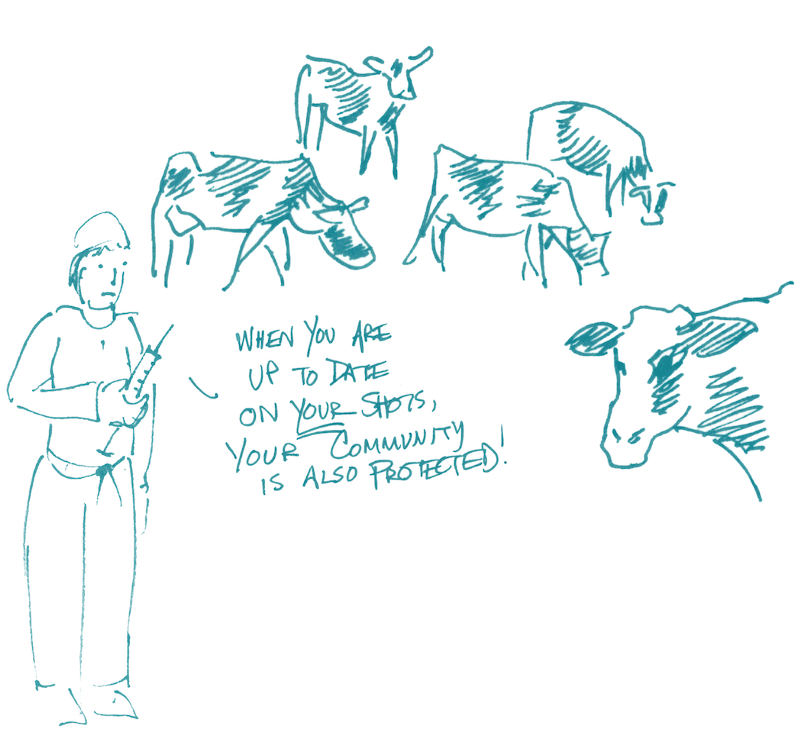
For most health educators, the value and importance of vaccines goes without saying. But, educating people — whether in person or via a website or fact sheet — about the benefits of vaccines can be challenging. Here are some ideas.
Talk about herd immunity, but without the “herd.”
True, there were cows involved when the smallpox vaccine was developed. But we’re pretty sure that most people don’t like thinking of themselves as part of a herd. Instead, try making a connection to people they care about.
When people say:
“I won’t get too sick from the flu, so I don’t need to get the shot.”
You can reply:
“When you’re up to date on your shots, you’re not the only one who’s protected. You also help to protect everyone around you — like your children, your parents, and people in your community who get sick a lot.”
Ax the stats.
Public health folks love to cite statistics. And there’s nothing wrong with telling a professional audience that 604 (87%) of the measles cases reported from 2001 to 2010 were import-associated.
But when you’re communicating with most people, it’s better to say something like this: “Getting all your shots is important because diseases can travel quickly around the world. For example, most Americans who get measles catch it while traveling overseas.”
Meet people where they are.
Recognize that your readers may have fears or misconceptions about vaccinations. If they do, it just means your work isn’t over yet.
Your impressive statistics won’t convince people to get a shot if they believe it’s unsafe, so take the time to dispel myths along with presenting facts.
The bottom line: Take the time to explain the benefits of vaccines — and think about your audience’s needs while you do it.
Browse recent posts